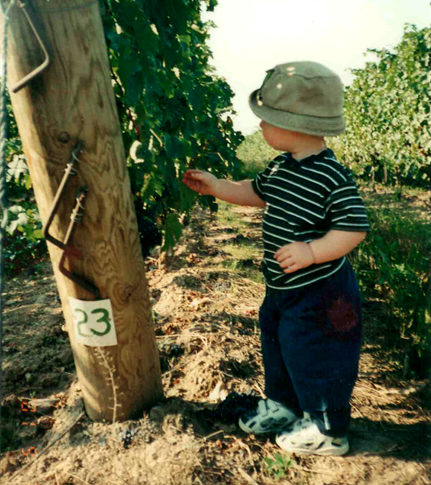Watson’s Vineyard and Family Farm is located less than a kilometre from the Niagara River, in the heart of Canada’s best grape-growing land. Started by John Watson in the late seventies, the farm is currently being taken over by John’s eldest son, Kevin and his wife Cathy. Kevin’s formal education was earned at the Niagara Parks Commission’s School of Horticulture, although he maintains that the best way to learn how to farm is to grow up doing it!
Kevin follows in his father’s footsteps and has been concentrating on developing the farm to it’s full capacity over the past few years. One key element followed by both father and son is to ensure that the farm remains a manageable family farm and not a large corporate or “factory” style operation.
The soil of Watson’s Vineyard farms is a mix of clay and sand loam and is very stoney making it ideal for grapes. This is home for some of the earliest Chardonnay, Riesling, Sauvingnon Blanc, Cabernet Franc and Pinos Gris vines in Ontario.


